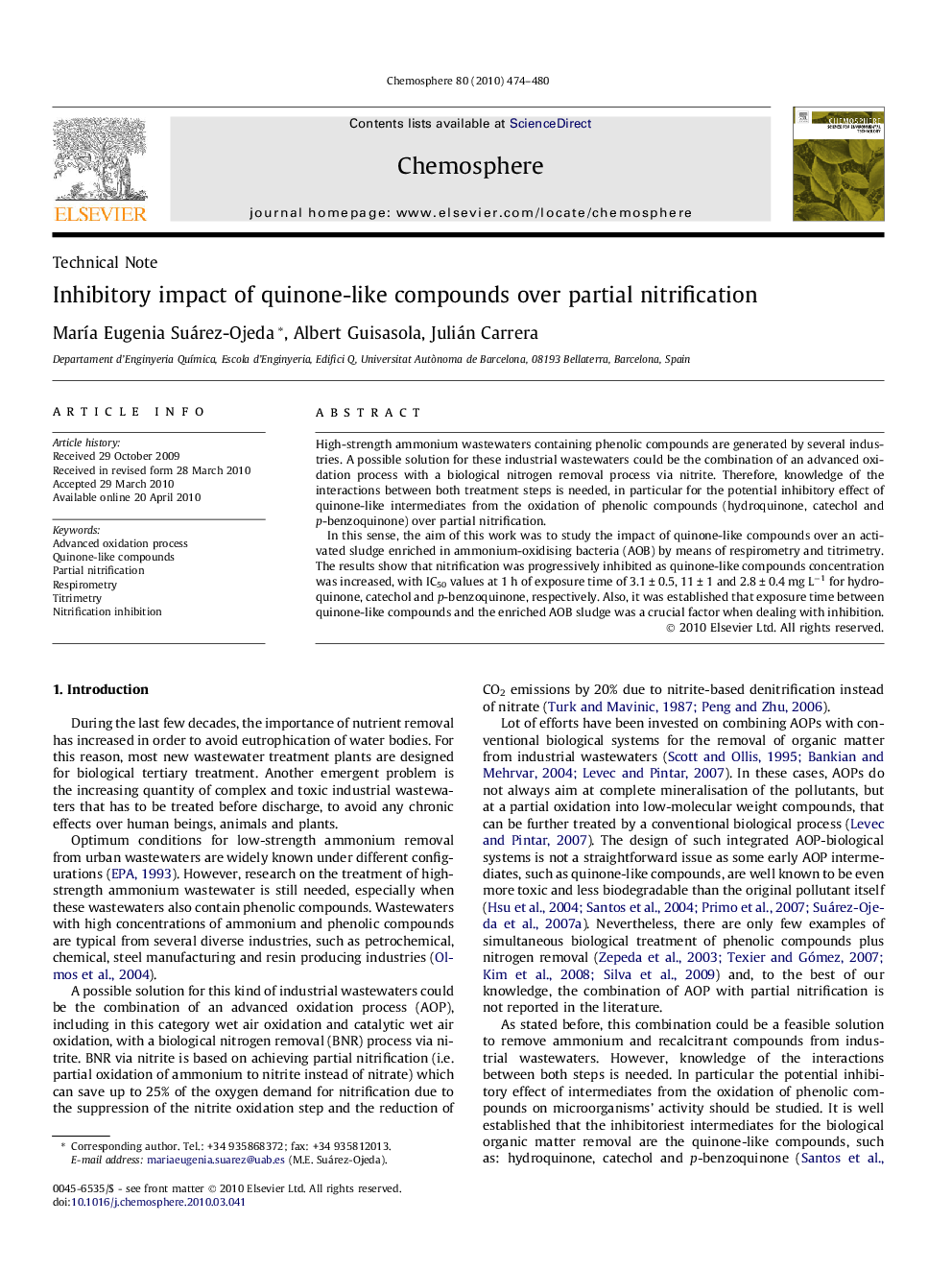| Article ID | Journal | Published Year | Pages | File Type |
|---|---|---|---|---|
| 4412143 | Chemosphere | 2010 | 7 Pages |
High-strength ammonium wastewaters containing phenolic compounds are generated by several industries. A possible solution for these industrial wastewaters could be the combination of an advanced oxidation process with a biological nitrogen removal process via nitrite. Therefore, knowledge of the interactions between both treatment steps is needed, in particular for the potential inhibitory effect of quinone-like intermediates from the oxidation of phenolic compounds (hydroquinone, catechol and p-benzoquinone) over partial nitrification.In this sense, the aim of this work was to study the impact of quinone-like compounds over an activated sludge enriched in ammonium-oxidising bacteria (AOB) by means of respirometry and titrimetry. The results show that nitrification was progressively inhibited as quinone-like compounds concentration was increased, with IC50 values at 1 h of exposure time of 3.1 ± 0.5, 11 ± 1 and 2.8 ± 0.4 mg L−1 for hydroquinone, catechol and p-benzoquinone, respectively. Also, it was established that exposure time between quinone-like compounds and the enriched AOB sludge was a crucial factor when dealing with inhibition.
